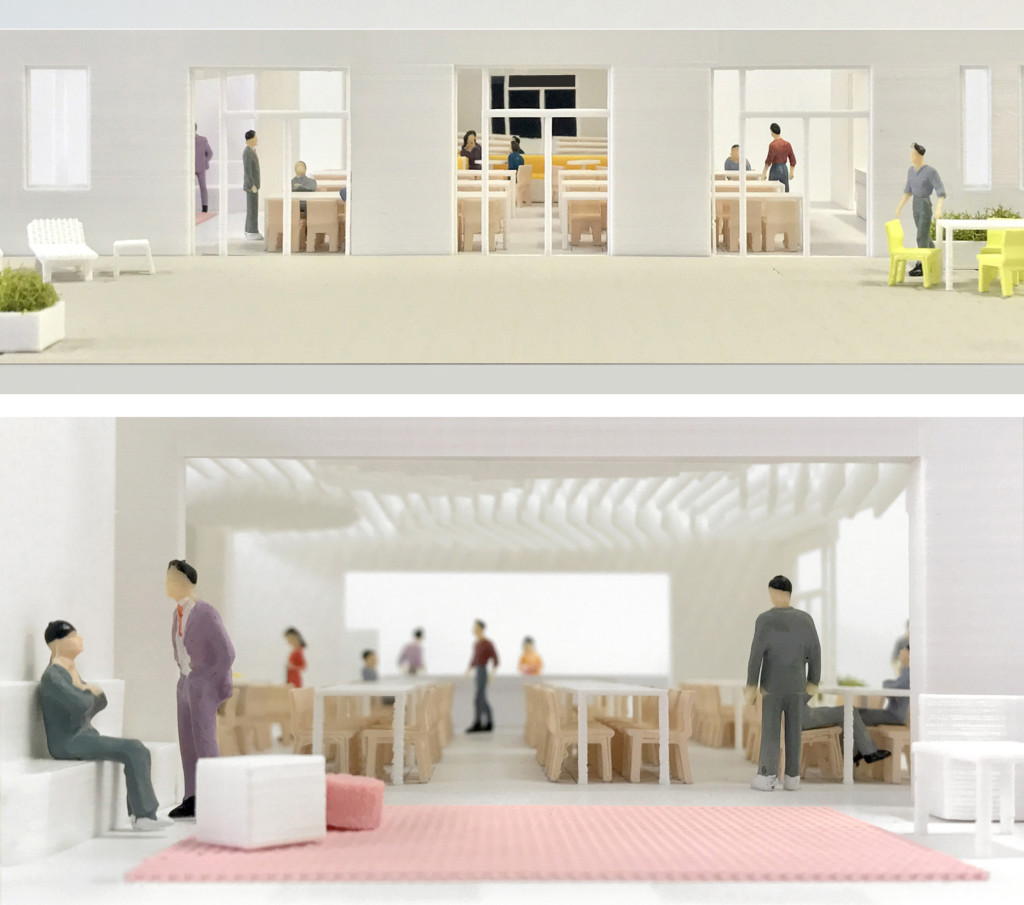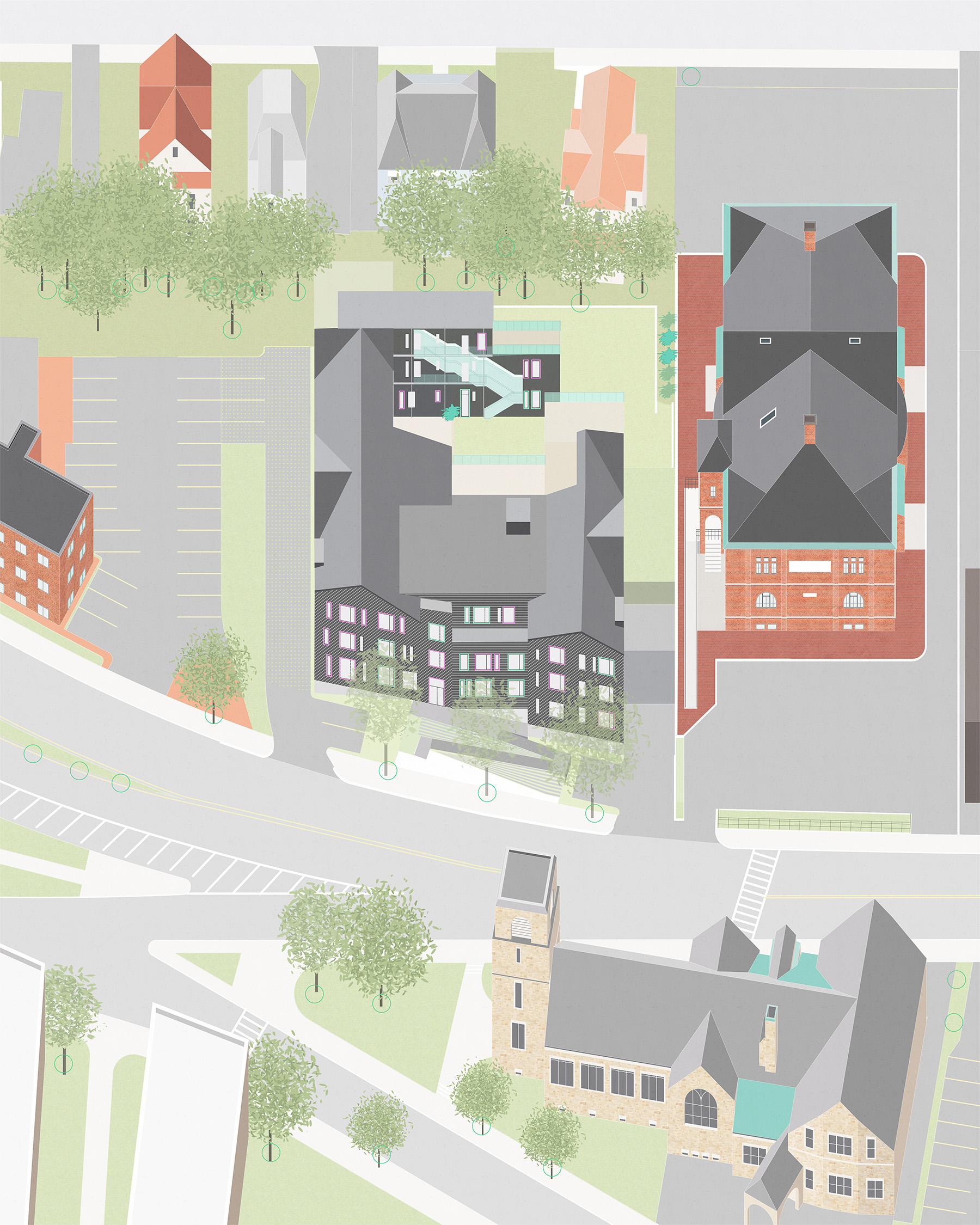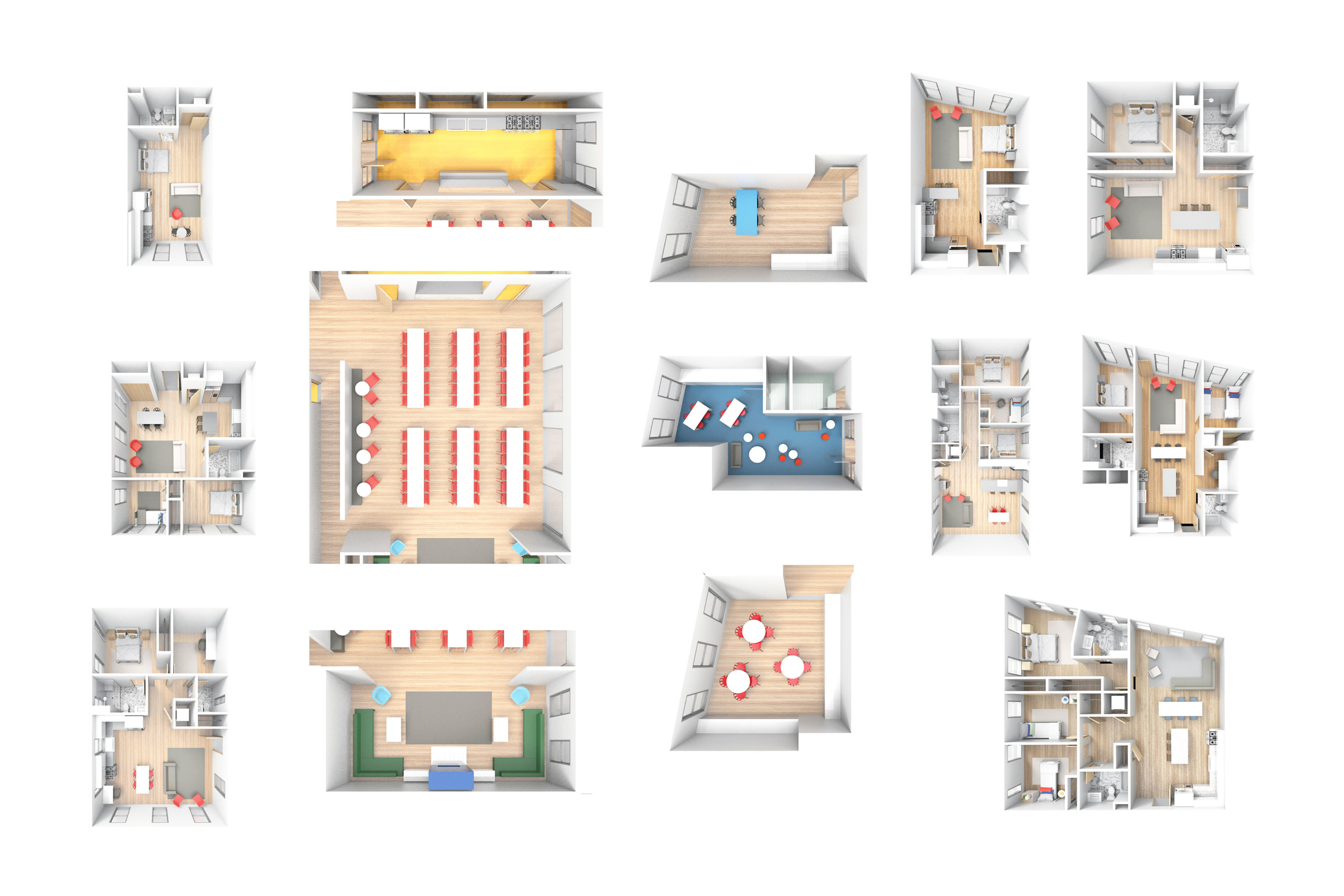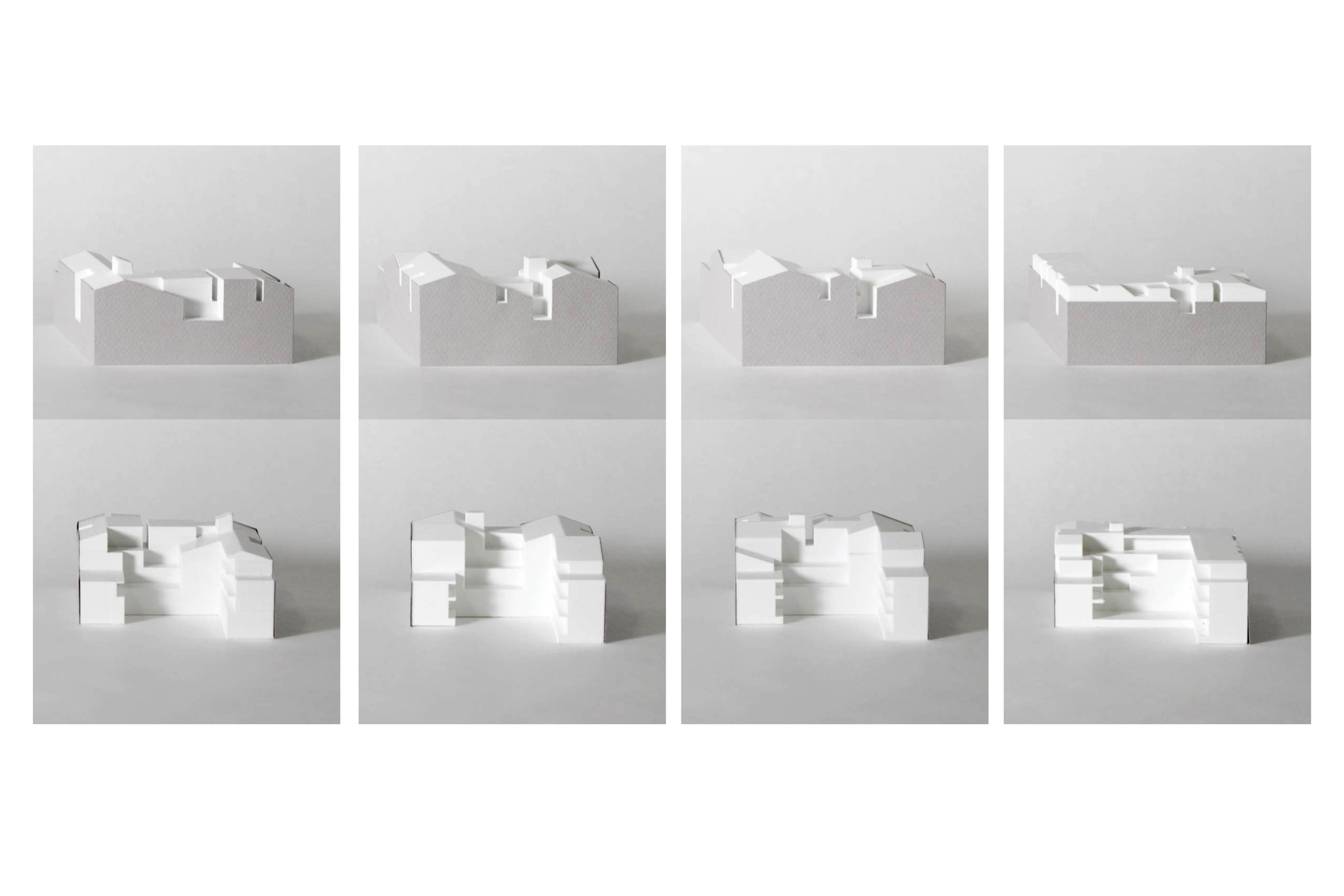Bay State Cohousing, a 30-unit cohousing community, is neatly woven into the low-density neighborhood fabric of Malden, Massachusetts. Slated to open this summer, the award-winning project from Jenny French and her practice, French 2D, is redefining what high-quality and community-oriented housing can look like in Greater Boston, especially in the face of growing unaffordability and displacement. It is spearheaded by an intergenerational group of residents seeking support, friendship, and collectivity through housing, and is one of just 200 official cohousing projects in the United States. French2D—with their predilection for “strange housing,” and focus on matching familiar ideas of home with more radical typologies—was the right practice to bring this cohousing dream to life.
As one half of French 2D and an assistant professor in practice at the GSD, French is deeply engaged with local issues of collectivity, housing, public space, history, and identity. From Bay State Cohousing to her 2022 core studio, “Kinship and Crises of a Near Future,” French is re-centering who collective housing can be for, what it can do for a neighborhood, and how municipalities can be more amenable to its development. In a recent conversation over Zoom, French spoke about the process behind designing the Bay State Cohousing project, the importance of relationship-building as a designer, and why she is optimistic about the future of cohousing.
Bay State Cohousing was recently named winner of Architect Magazine’s 67th Annual Progressive Architecture Award. Let’s start there: tell me about this exciting project.
Bay State is a 30-unit cohousing community just north of downtown Boston and well connected by the MBTA’s Orange Line. The project is an intentional community following the North American cohousing model, and is comprised of individual living units, which are connected to the larger framework of a “common house,” including terraces, yards, a dining room for 100, music room, living room, community pantry, and more—all designed to support a set of shared experiences and resources. Allowing for mutual aid, friendships, and families of choice, and the pooling of certain resources while maintaining individual household ownership and separation of finances is in many ways a subtly subversive counter to normative multifamily housing.
Though often conflated with other forms of collective living like cooperative housing and co-living, cohousing follows a fairly narrow definition and is modeled after quite specific Danish precedents from the latter half of the 20th century. The model’s success is well documented, but it does run the risk of falling into the “box” of pro-progressive housing models that end up being unintentionally inaccessible. At French 2D we are particularly interested in finding new avenues for cohousing as a more inclusive and accessible model.

What’s the origin story of this project?
The community began with two demographic blocks: people who, at the beginning of the process, were not yet 30 and others who were in late-middle age. Throughout the design process, the community has grown. The soon-to-be residents represent a range of family types and life stages, including multigenerational families, singles, single parents, and retirees, who together form a network of ready and willing friends, caregivers, surrogate grandparents, and more. The shaping of the community is defined not just by the current situation of each resident, but through envisioning shifting relationships, changing and aging bodies, and future members. This has become an essential frame of reference for the whole group—making all decisions with accountability to the collective community.
The project is now nearing completion; our involvement began in 2016, but the group formed several years before that over a mutual longing for collective living and social connection.
Do you think the pace of the project was essential to its success?
Time is a vital resource in this type of work. Other such communities have taken a decade or more to materialize, and though the time investment and journey enrich the project, we are keenly aware that expanded equity and access to alternative housing models calls for routes to get to similar results more quickly. I don’t think a “slow” process is the only way, but I think this project’s success, particularly in navigating the uncertainty of the past two years, relies on a strong tenure of relationships.
We were certainly met with challenges in local zoning. Shortly after the design phase began, the municipality announced a building moratorium followed by selective downzoning—on the project site in particular. To make a long story short, a series of setbacks for the project led to one of its brightest spots: the creation of a new cohousing zoning ordinance allowing (modestly) higher residential density tied to shared spaces and self-governance.

Looking at the project plans, it fits quite seamlessly into the majority single-family neighborhood. How is this context reflected in the architectural and spatial design?
After years of searching for a site, this was the most urban, closest to public transportation, and largest site that was economically feasible for our clients. It’s a ¾-acre site, but the anticipated program could easily fill 1½ to 2 acres. The project is in many ways a giant house in which individual units are analogous to private bedrooms connected by the communal spaces.
We took advantage of stacking and interlocking units, interior common spaces, and exterior common spaces, because we could not reproduce the horizontal spatial arrangement typical of North American cohousing. The constraints on the size of the site and desired program also created an ethos of abundance despite limited space. Specifically, in the private units, we shaved off bits of square footage to consolidate and give back to common spaces. Stacking and interlocking allowed us to embed social, visual, and visceral affordances into the body of the building.
The courtyard and balcony arrangement offers collective space where residents can connect in a supportive way. How can designers introduce this concept on a smaller scale to bolster the everyday experience of children and families in existing built space?
We looked for natural points of intersection in the spaces where adults could be needed and easily invited to participate in childcare. Specifically, the interior courtyard and lawn are overlooked by half of the units and all of the common spaces, each of which have exterior access at every level. Rather than being about surveillance, these connections create reciprocity across multiple places for gardening, chatting, playing, reading, or lounging. Many of the community’s older residents and those with children chose these courtyard-facing units to be near to one another, to the garden in the terraced beds at the rear of the site, and to the informal playspace on the patio.
As a baseline of multifamily housing, it’s important to include kids in the spaces of everyday life. I like the saying “Feminism is the radical idea that women are people,” and I think the acknowledgment that kids are people and members of society is an important one. This then translates to creating boundaries in design that produce both freedom and autonomy and a set of fail-safes to connect children to life within the community.
Based on this experience do you feel optimistic about the future of cohousing?
Absolutely! It’s important to recognize the need for a continuum of collective housing models to address challenges of affordability and density. If we think about Cambridge, there are many instances of single-family homes next to duplexes or larger multiunit apartments, a condition that American suburbia is certainly allergic to. How can we create more instances of 5, 10, even 20 to 30 unit buildings next to single-, two-, and three-family homes to allow that kind of variation while also improving the fabric of neighborhoods? That is the question that cohousing can begin to address.
Looking more broadly at your work, “care” and “collectivity” are consistent themes, yet in architectural practice both seem to be teetering on the edge of being buzzwords. How is French 2D working to ensure practice in this space remains intentional and critical?
This is a timely and hard question. I want to caution against rendering words useless and empty through overuse, and in doing so dismissing gigantic and critical areas where there’s work to be done. Since our start, French2D has centered on relationship-building, trying to think about how we go from being strangers to roommates, to friends, or to colleagues. We ask these questions not just of housing, but of a host of design elements, down to materials and small objects. To that effect, discussion around domestic space and mutual support within it, is inevitable and overdue.
I’m interested in the ways that a reemerging focus on feminist narratives from individuals like Silvia Federici or bell hooks or Dolores Hayden can expose the things that all of us share. For example, how do you look after an aging parent? Or how do you nurture a child who is not necessarily your own? These narratives posit that these are not individual challenges, but are shared necessities. I am interested in how the built environment is implicated in this essential work.

